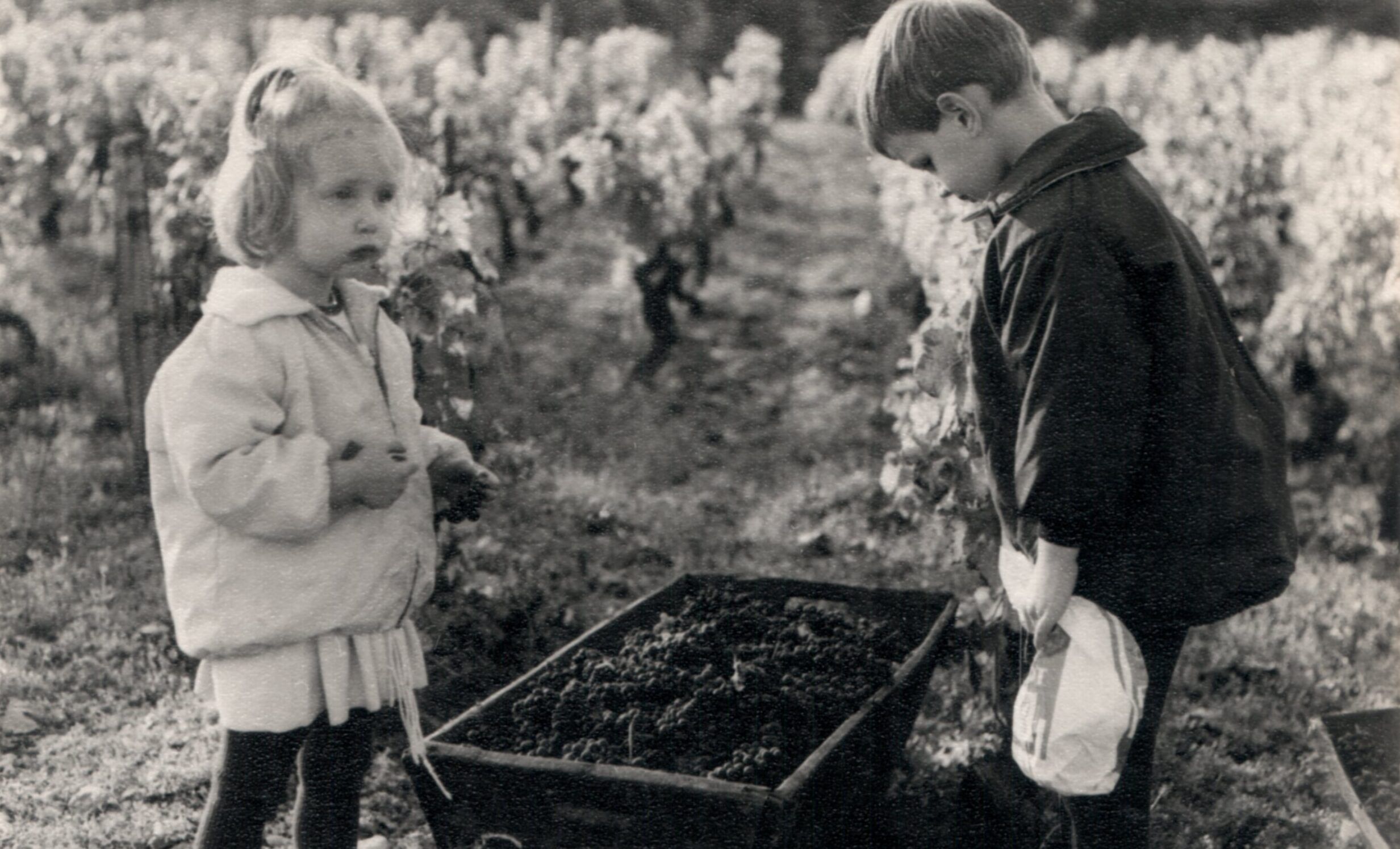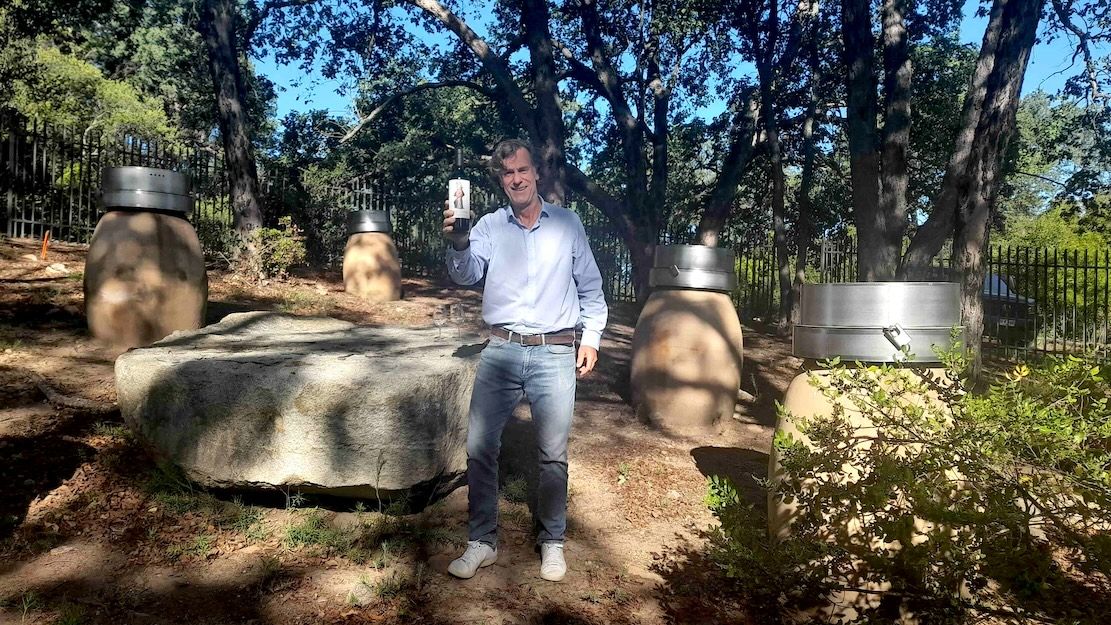“To help celabrate 100 years of Clos des Mouches, we tasted the new 2018 vintage as well as wines from the newly acquired site on the Côte de Beaune into which declassified grapes from Clos des Mouches are blended,” writes Dean.
It was a Saturday morning in the early 1980s. Robert Drouhin had gone to the Clos des Mouches as he always did before he went fishing with one of his sons Philippe to collect earthworms for bait. But every time he stuck the pickaxe into the soil and pulled it out – there was nothing to shake off.
It was then that they realised the soil was dying – something had to change – and the family could no longer farm synthetically with pesticides and herbicides.
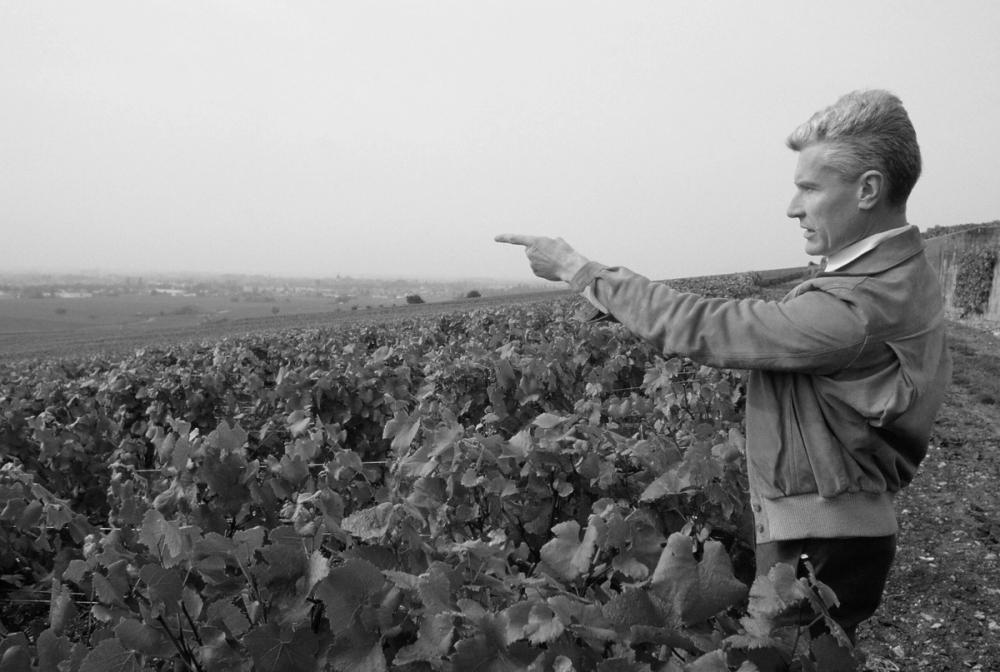
Robert Drouhin at the Clos des Mouches
“When I took over the reins of the estate in 1988,” Philippe Drouhin begins, “my father told me something that struck me, he told me we are coming out of a period when agricultural engineers did such exceptional work that the vines are magnificent, they are very green, they are very strong but, in the end I make less good wine. At the same time I involuntarily received from my viticulture teachers answers to basic questions that convinced me that the culture of synthetic chemistry was not the future.”

Clos des Mouches today: restored back to health
Philippe, who is estates manager for Joseph Drouhin, started farming organically but soon saw that the levels of copper were poisoning the soil. Together with a group of winemakers that included Pierre Mason, Frédéric Lafarge and Dominique Lafon he learned biodynamics and fully converted the estate to biodynamics in the early 1990s.
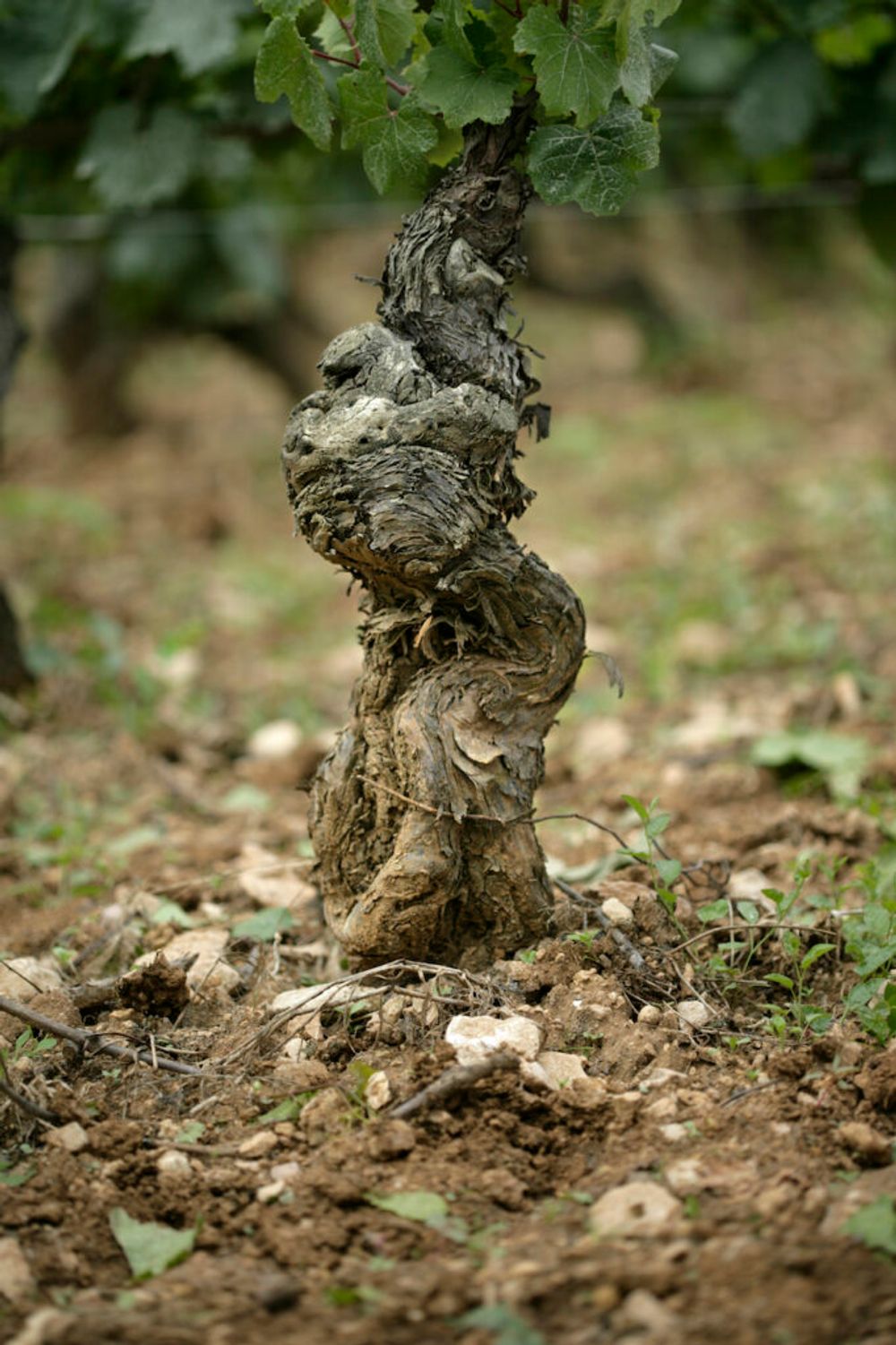
Pinot Noir and Chardonnay are planted plot by plot like a chequer board
Today Clos des Mouches is only fertilised by manure, white wood and guano with the soil ploughed by a variety of horse and two-row tractors to minimise soil-compacting. The vines are also just treated with infusions and macerations of plant materials, sulphur, copper and powdered rock. Vines were increased from 10,000 to 12,500 stocks/ ha and yields reduced to 20% of what appellation rules allow.

Like father like son: Philippe Drouhin
“That was a good lesson,” Robert says about the epiphany with the earthworms, as he surveys the Clos des Mouches, “and I think that, since then we have corrected that, if we wanted to go fishing tomorrow we could certainly find the earthworms again.”
Drouhin’s beating heart
In explaining this one small part of the winemaking cycle at the estate it is quite clear how significant Clos des Mouches is to the Drouhin family. In fact, you could say it is the great producer’s beating heart.
We are tasting the 2018 vintage of red and white from the vineyard with three of the four children that make up the fourth generation of Drouhin – Veronique, Frédéric and Philippe Drouhin – to mark the 100 year anniversary of the vineyard’s acquisition.

Maurice Drouhin sporting his Legion of Honour
With great determination, Maurice Drouhin (the founder’s son) bought 41 parcels from eight different owners, collectively making up 14 hectares of premier cru site that rises from 230 to 280 metres above sea level, has a variety of different soil types and aspects and has near-neighbours in Corton Charlemagne, Puligny-Montrachet and Pommard. Originally planted just with Pinot Noir Maurice replanted half with Chardonnay in a ‘checkerboard’ style alternating red and white grapes, a technique carried on to this day, with the team trying to extract the best results plot by plot from the vineyard so that they can achieve excellence from Clos des Mouches as a whole.

Veronique and Philippe Drouhin in the Clos des Mouches
Drouhin now owns 80 hectares of vine across 90 different appellations with two thirds being Premier or Grand Cru. It is still and has always been a family-owned domaine and negociant – acquiring grapes from suppliers with long-standing contracts. The two crown jewels in the family’s crown are Domaine Marquis de Laguiche which has the largest percentage of all the land in Le Montrachet (30%) and which Drouhin has had exclusive control over since 1947. The other is the near mythical Clos des Mouches which is one of those rare things in Burgundy – an entirely walled-in vineyard.
Every year the vineyard is replenished with ‘sélection massale’ vine stocks from the Drouhin nursery, and the fruit from the youngest vines are declassified and blended with fruit from the recently acquired vineyard on the Côte de Beaune, two wines of which are also part of the tasting.
“It is not well known as an appellation but we are helping to revive it, it should be known better,” says Veronique. The price and quality is excellent and technically the wine is made the same with 20% new oak 500l barrels.”
So how were the new wines tasting?
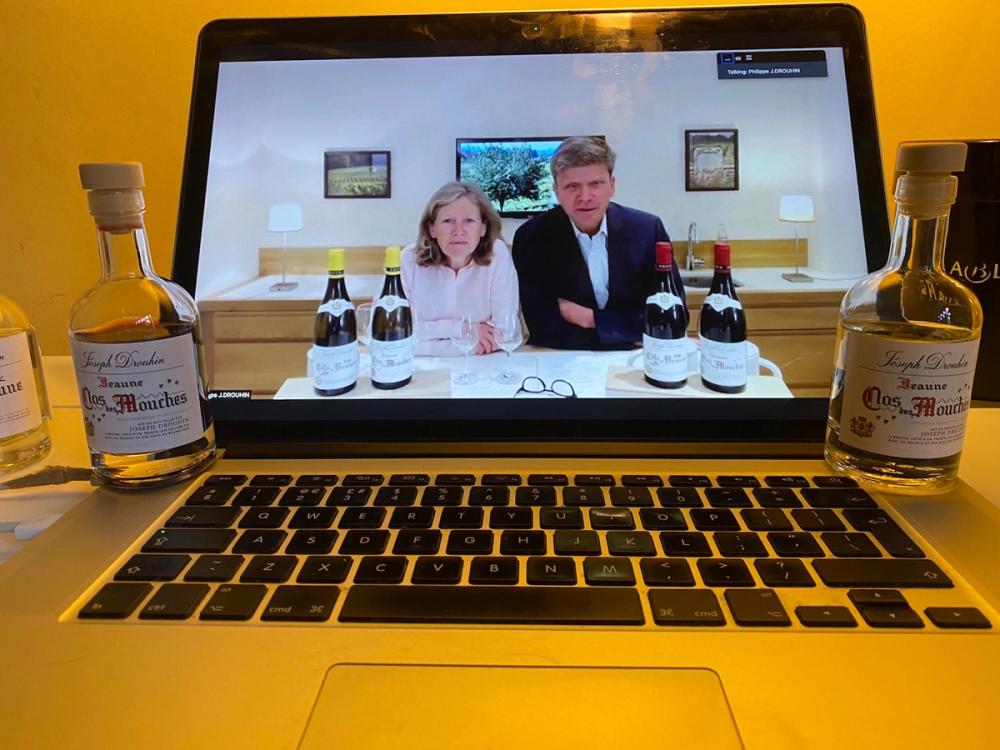
Veronique and Frédéric Drouhin, Zoom tasting
Beaune Clos des Mouches blanc, 2018, Premier Cru, Joseph Drouhin
This is a fabulous wine that lives up to the family’s billing that ‘it allies the complexity and elegance of a Bâtard-Montrachet with the power of a Corton-Charlemagne’ – two appelations that the Close des Mouches lies inbetween. By that I mean the wine is big and broad, full of extract but carried by intense, mineral freshness.
Pale luminous yellow-gold; the nose is complex and speaks of the wine’s pedigree and time in barrel. There are floral notes of white meadow flowers, grilled hazelnuts; the palate is rounded, rich, slightly oleaginous, but which also has a good crunch to it. The wine goes on a real journey within the mouth with wave after wave of flavour that takes in nectarine, Sicilian lemon, pain de miel. The finish is long and crisp.
The wine is made from various plots within the Clos des Mouches. Yields are kept to 20% below what is allowed, the grapes are sorted twice and pressed direct into seasoned barrels (25% new) and aged for 12-15 months.
Beaune Clos des Mouches, rouge, 2018, Premier Cru, Joseph Drouhin
Top drawer Pinot that marries power and intensity with elegance and detail. Medium to deep ruby, opaque; The nose is open and floral with a melange of red and black fruit with notes of red cherry, blackberry, and earthier elements lurking around – a wisp of smoke, black earth, liquorice. The palate is broad, fleshy and juicy, underpinned by considerable structure – the balance is spot on, flavours woven together, well-meshed – the finish lingering but a pointe.
Young, expressive with a good deal of charm and elegance. “2018 was a beautiful crop, says Veronique, “The reds are colourful, structured and very expressive aromatically.” Quite. The wine was aged for 14-18 months in barrel (20% new).
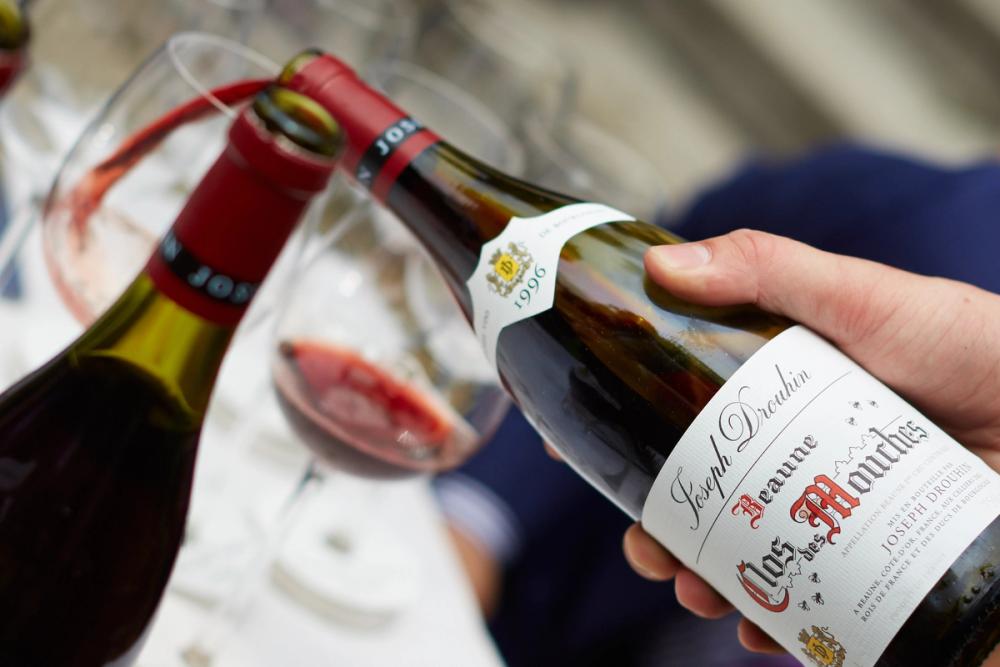
Not the vintage we were tasting (the trouble with mini samples)
In addition we tasted the two new Côte de Beaune wines.
Tied in with the continual replanting programme of Clos des Mouches is the relatively recent Côte de Beaune cuvées – in which declassified wine from the youngest vines in Clos des Mouches is blended (35-40% with this vintage) with wine made from this recently-acquired 3.5 hectare Drouhin-owned plot (2.5 ha white/ 1ha red). The Côte de Beaune is an appellation for vineyards on top of the hill overlooking Beaune and not to be confused with Côte de Beaune-Villages which is for several villages blended together. The wine is aged in barrel (20% new), but the wood here is perfectly integrated.
Côte de Beaune blanc, 2018, Joseph Drouhin
Pale gold; there are attractive aromas of ripe orchard fruit, honey, almond shells and lemongrass; The palate is rounded, generous but balanced with some lean, lemon oil acidity keeping everything in order, and giving the mouth a fresh wash of juice before the nervy, long, mineral-lift on the finish.
Côte de Beaune rouge, 2018, Joseph Drouin
Pale ruby, purple edging, transparent; the nose is complex involving red fruit (strawberries), with herbaceous and spicy elements (cardammon/clove/ pepper), and an earthy sub-text – a wisp of smoke and red liquorice. On the palate the wine is elegant, medium weight, dry with a crisp line of acidity. Reasonably taut but with plenty of fruit flavours. The wine was aged for 12-15 months in barrels (10% new) with 5% whole bunch.
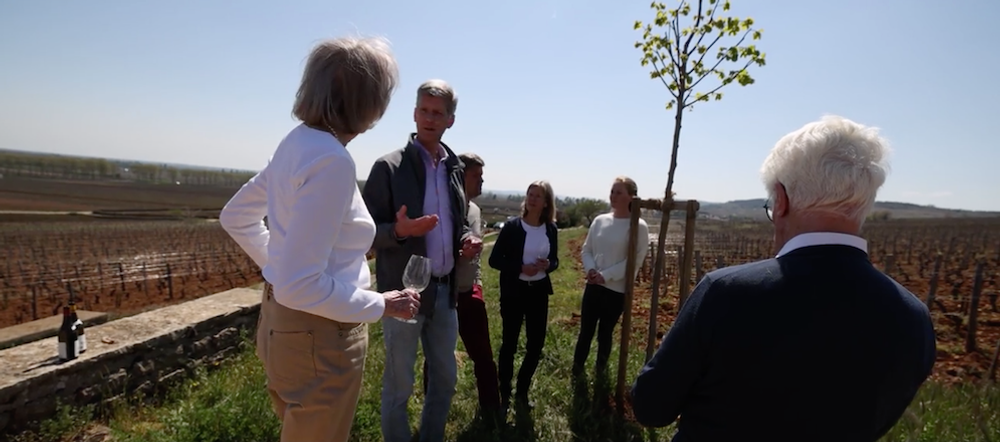
Planting a linden tree in honour of Maurice Drouhin in the Clos des Mouches (Robert far right)
The wines of Joseph Drouhin are imported and distributed in the UK by Pol Roger Portfolio which is a supplier partner of The Buyer. To find out more about them click here.
